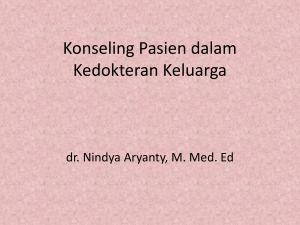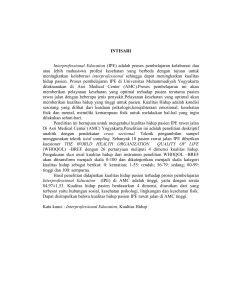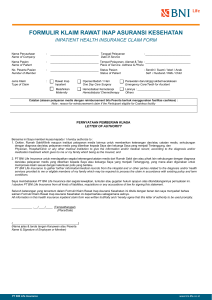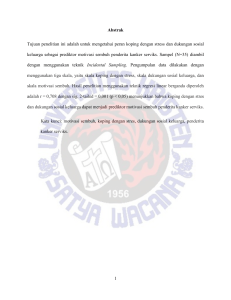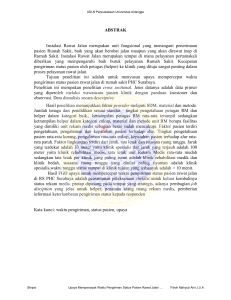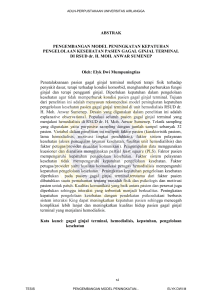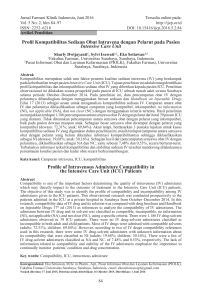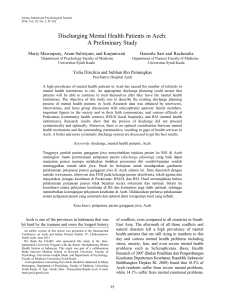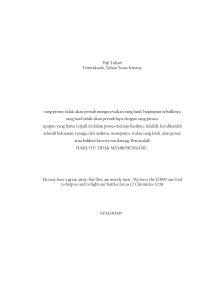Konsep dan Model Perawatan Palliative
advertisement
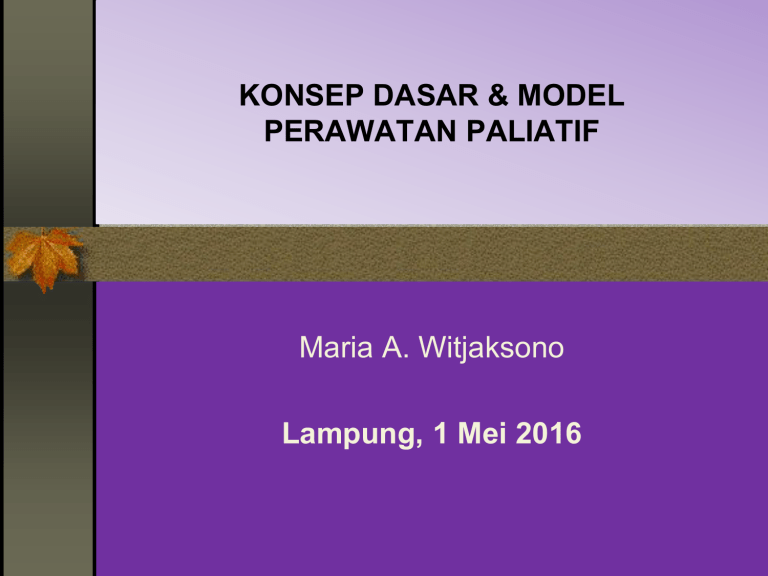
KONSEP DASAR & MODEL PERAWATAN PALIATIF Maria A. Witjaksono Lampung, 1 Mei 2016 KASUS Wanita 42 th, Tidak menikah, hidup dengan 16 orang di rumah sederhana Terbaring sejak beberapa bulan Ibu, 72 th seorang janda, hidup dengan berjualan di rumah tidak laku karena tetangga takut tertular Ibu tidak sanggup merawat Latar Belakang Pasien dengan penyakit yang dapat mengancam jiwa mengalami penderitaan yang muncul akibat masalah fisik, gangguan psikologis, kesulitan sosial dan problem spiritual Penderitaan pasien menjadi beban keluarga Diperlukan pendekatan komprehensif dan berkelanjutan untuk mencegah dan mengatasi penderitaan pasien sehingga tercapai kualitas hidup yang lebih baik dan untuk mengurangi beban keluarga PALLIATIVE CARE Rumah menjadi tempat yang paling banyak dipilih untuk perawatan pasien terminal Perawat memiliki peranan besar dalam Perawatan Paliatif PENDERITAAN: FISIK, PSIKOLOGIS, SOSIAL, SPIRITUAL MEMAHAMI PENDERITAAN PASIEN PETUGAS KESEHATAN PASIEN Nyeri Menjadi beban Tidak bisa makan Tergantung keluarga Hipersekresi Tidak bisa Bau menyampaikan kebutuhan dan perasaannya: malu, kasihan mama Imobilitas Disfigurement “The relief of suffering when cure is impossible should become the heart of all medical services. It is what every patient and family hopes for and has a right to expect. Therefore, each health care professional has responsibility to provide it when it is indicated”. Derek Doyle, 1999 To have information presented that is easy to understand To have input into the type of their medical care To make medical decision with their family if they choose to To use health information to make longer term decisions about end of life care For pain relief and relief of suffering To access palliative care To know they are in terminal illness To have a dignified death Something to Ponder about: The Dying Patient is a Living Person - Saunders had a revelation: “I realized that we needed not only better pain control but better overall care. People needed the space to be themselves. I coined the term ‘total pain,’ from my understanding that dying people have physical, spiritual, psychological, and social pain that must be treated. I have been working on that ever since.” Definition Palliative care is an approach that improves the quality of life of patients and their families facing the problems associated with life-threatening illness through the prevention and relief of suffering by means of early identification and impeccable assessment and treatment of pain and other problems --physical, psychosocial and spiritual (WHO 2002) PC is an integrated system of care that improves QoL by providing pain & symptoms relief, spiritual and psychosocial support from diagnosis to the end of life and bereavement (WHO 2005)
